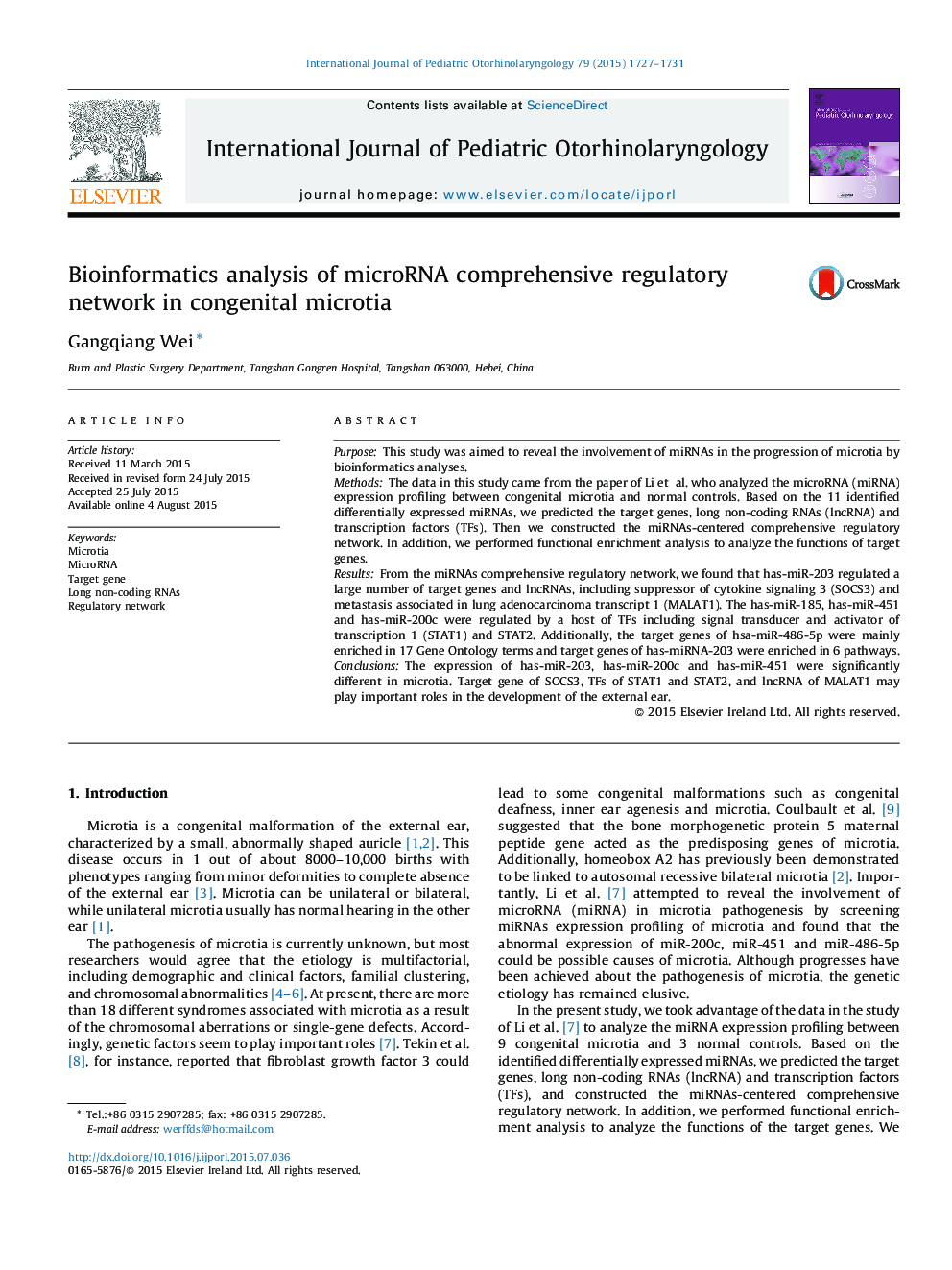| Article ID | Journal | Published Year | Pages | File Type |
|---|---|---|---|---|
| 4111937 | International Journal of Pediatric Otorhinolaryngology | 2015 | 5 Pages |
PurposeThis study was aimed to reveal the involvement of miRNAs in the progression of microtia by bioinformatics analyses.MethodsThe data in this study came from the paper of Li et al. who analyzed the microRNA (miRNA) expression profiling between congenital microtia and normal controls. Based on the 11 identified differentially expressed miRNAs, we predicted the target genes, long non-coding RNAs (lncRNA) and transcription factors (TFs). Then we constructed the miRNAs-centered comprehensive regulatory network. In addition, we performed functional enrichment analysis to analyze the functions of target genes.ResultsFrom the miRNAs comprehensive regulatory network, we found that has-miR-203 regulated a large number of target genes and lncRNAs, including suppressor of cytokine signaling 3 (SOCS3) and metastasis associated in lung adenocarcinoma transcript 1 (MALAT1). The has-miR-185, has-miR-451 and has-miR-200c were regulated by a host of TFs including signal transducer and activator of transcription 1 (STAT1) and STAT2. Additionally, the target genes of hsa-miR-486-5p were mainly enriched in 17 Gene Ontology terms and target genes of has-miRNA-203 were enriched in 6 pathways.ConclusionsThe expression of has-miR-203, has-miR-200c and has-miR-451 were significantly different in microtia. Target gene of SOCS3, TFs of STAT1 and STAT2, and lncRNA of MALAT1 may play important roles in the development of the external ear.
